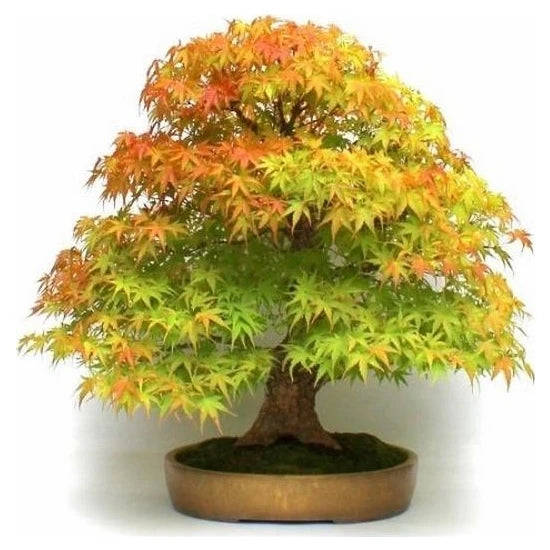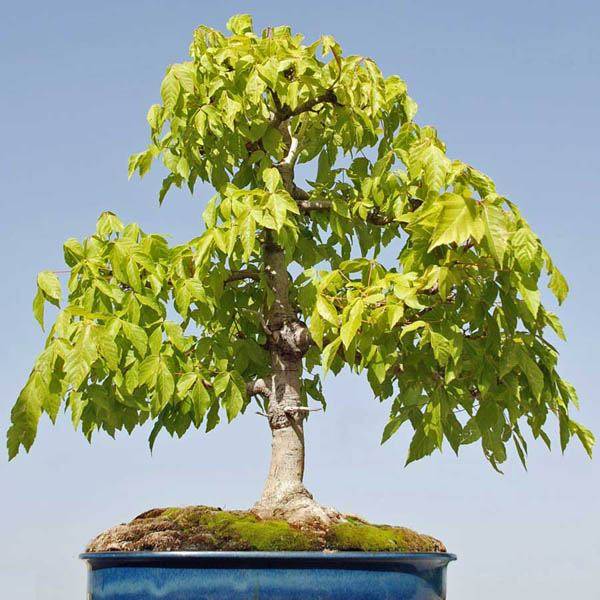









Acer negundo Tree - Ash Leaf Maple - Exotic / Rare Bonsai Tree - 5 Seeds
Check my rate
View locations
| Main centres: | 1-3 business days |
| Regional areas: | 3-4 business days |
| Remote areas: | 3-5 business days |










| Main centres: | 1-3 business days |
| Regional areas: | 3-4 business days |
| Remote areas: | 3-5 business days |
Acer negundo, the box elder, boxelder maple, Manitoba maple or ash-leaved maple, is a species of maple native to North America. It is a fast-growing, short-lived tree with opposite, compound leaves. It is sometimes considered a weedy or invasive species, and has been introduced to and naturalized throughout much of the world, including in South America, Australia, New Zealand, South Africa, much of Europe, and parts of Asia. Acer negundo is a fast-growing and fairly short-lived tree that grows up to 1025 metres tall, with a trunk diameter of 3050 centimetres, rarely up to 1 m in diameter. It often has several trunks and can form impenetrable thickets. The typical lifespan of box elder is only 60 years. Under exceptionally favourable conditions, it may live to 100 years. The shoots are green, often with a whitish to pink or violet waxy coating when young. Branches are smooth, somewhat brittle, and tend to retain a fresh green colour rather than forming a bark of dead, protective tissue. The bark on its trunks is pale gray or light brown, deeply cleft into broad ridges, and scaly. Unlike most other maples, A. negundo is fully dioecious and both a male and female tree are needed for reproduction to occur. Acer negundo often grows alongside waterbodies. This species prefers bright sunlight. It often grows on flood plains and other disturbed areas with ample water supply, such as riparian habitats. Human influence has greatly favoured this species; it grows around houses and in hedges, as well as on disturbed ground and vacant lots. Although its weak wood, irregular form, and prolific seeding might make it seem like a poor choice for a landscape tree, A. negundo is one of the most common maples in cultivation and many cultivars have been developed. A protoxin present in the seeds of Acer negundo, hypoglycin A, has been identified as a major risk factor for, and possibly the cause of, a disease in horses, seasonal pasture myopathy (SPM). SPM is an equine neurological disease which occurs seasonally in certain areas of North America and Europe, with symptoms including stiffness, difficulty walking or standing, dark urine and eventually breathing rapidly and becoming recumbent. Ingestion of sufficient quantities of box elder seeds or other parts of the plant results in breakdown of respiratory, postural, and cardiac muscles. The cause of SPM was unknown for centuries despite the disease being well known among affected areas and was only positively determined in the 21st century. Although its light, close-grained, soft wood is considered undesirable for most commercial uses, this tree has been considered as a source of wood fiber, for use in fiberboard. There is also some commercial use of the tree for various decorative applications, such as turned items (bowls, stem-ware, pens). Such purposes generally use burl or injured wood, as the injured wood develops a red stain. Acer negundo has been used by Native Americans for several medicinal purposes. The Cheyenne burn the wood as incense for making spiritual medicines, and during Sun Dance ceremonies. The Meskwaki use a decoction of the inner bark as an emetic, and the Ojibwa use an infusion of the inner bark for the same purpose. The sap has been used to make syrup by Native Americans. The tree also makes an interesting Bonsai specimen.